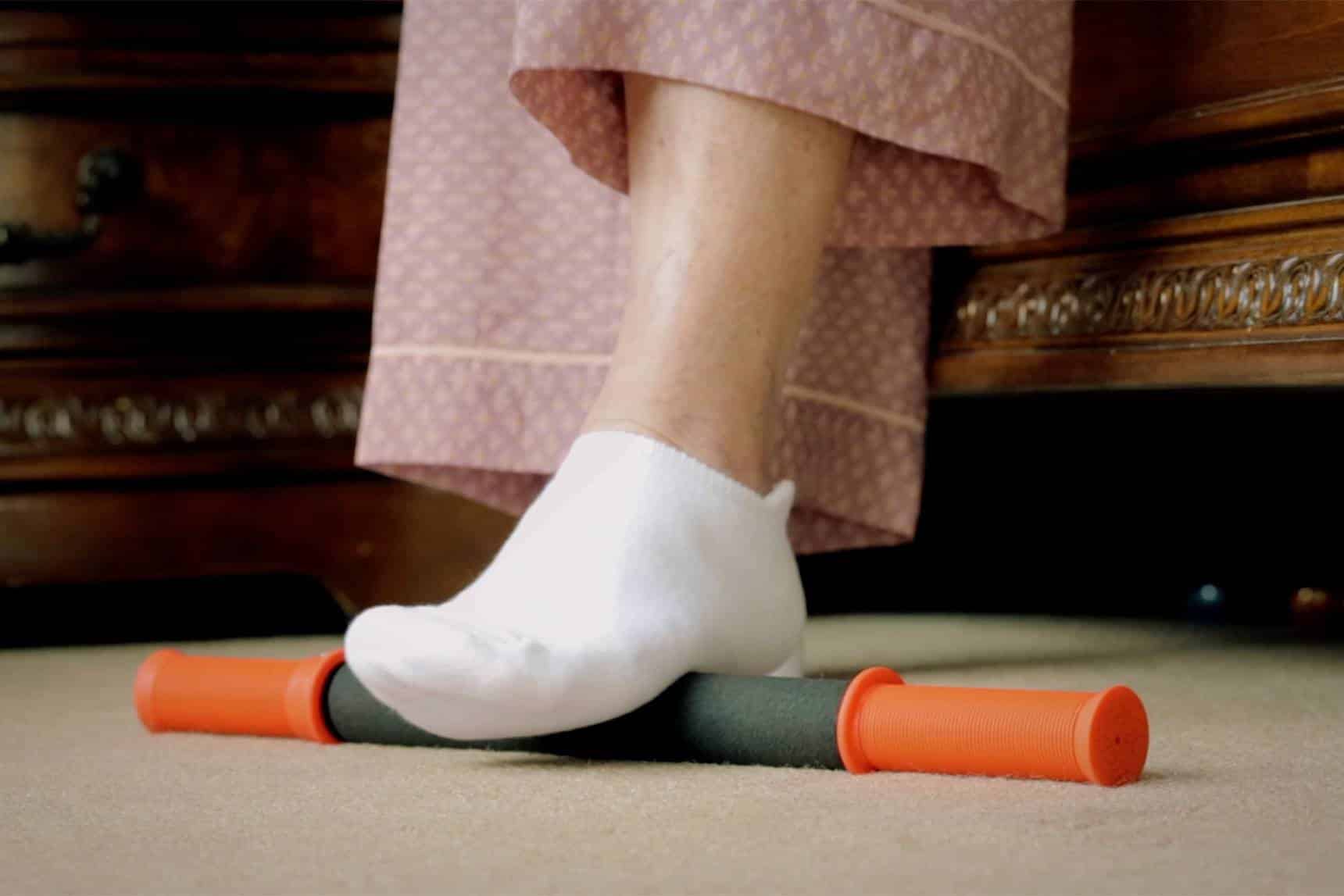
Pain in the arm and hand may be caused by a number of different muscles, primarily those that attach directly to the neck, shoulder, back and even the chest. Muscle knots in these muscles can refer pain locally around the upper arm, forearm and elbow, while other muscle knots can refer pain to the wrist and hand as well as other parts of the body.
Common muscle knots in the arm and hand, which consist of tight and contracted muscles, are indicated below by a black dot. The red area in the illustrations indicates “referred pain” – meaning, the pain you feel is often not in the location of your trigger point until you press on it. As an example, you may feel pain in the upper arm, but the trigger point may actually be in the neck. For a comprehensive look at more than 260 different pain map illustrations throughout the body, you may want to purchase the Tiger Tail Self-Help Guide to HAPPY MUSCLES.
The forearm consists of many muscles that can be categorized as flexors and extensors. Pain in the forearm can originate from knots in muscles located in the neck, shoulder, upper arm, and chest. Pain or discomfort in the forearm can be felt on the sides, top, and bottom of the forearm. Common injuries associated with muscles of the forearm are Tennis Elbow and Carpel Tunnel.
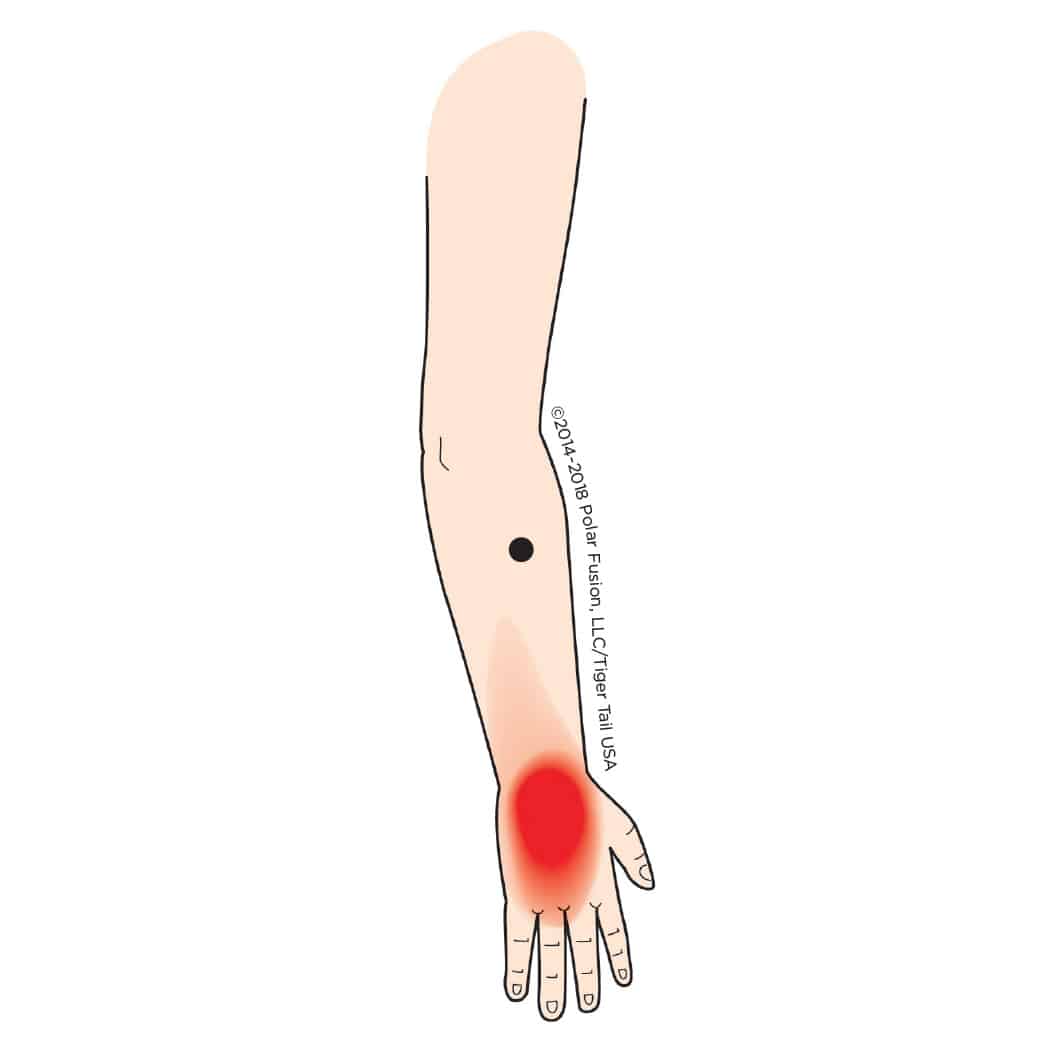
The Extensor Carpi Radialis Brevis is a muscle in the forearm that acts to extend and abduct the wrist.
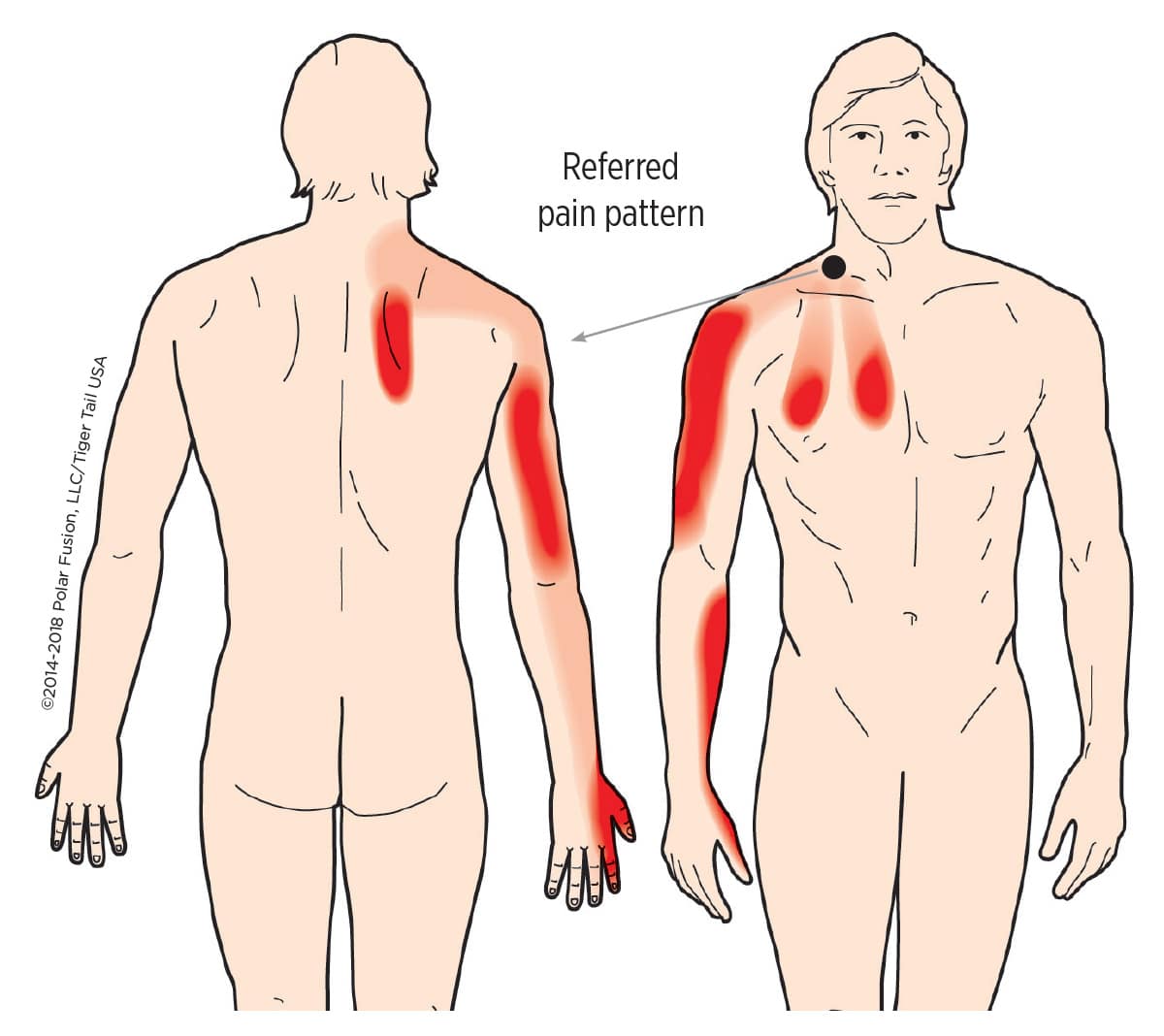
Muscle knots in the Scalene muscles of the neck can cause pain in the upper arm.
Wrist pain is typically categorized by the limited range of motion and weakness caused by muscle knots in the forearm flexor and extensor muscles. The wrist has four basic functions: moving the hand away from the body and moving to the left and to the right. Examples of movements of the wrist include knocking on a door and those movements used in sports such as hitting a tennis ball or swinging a golf club.
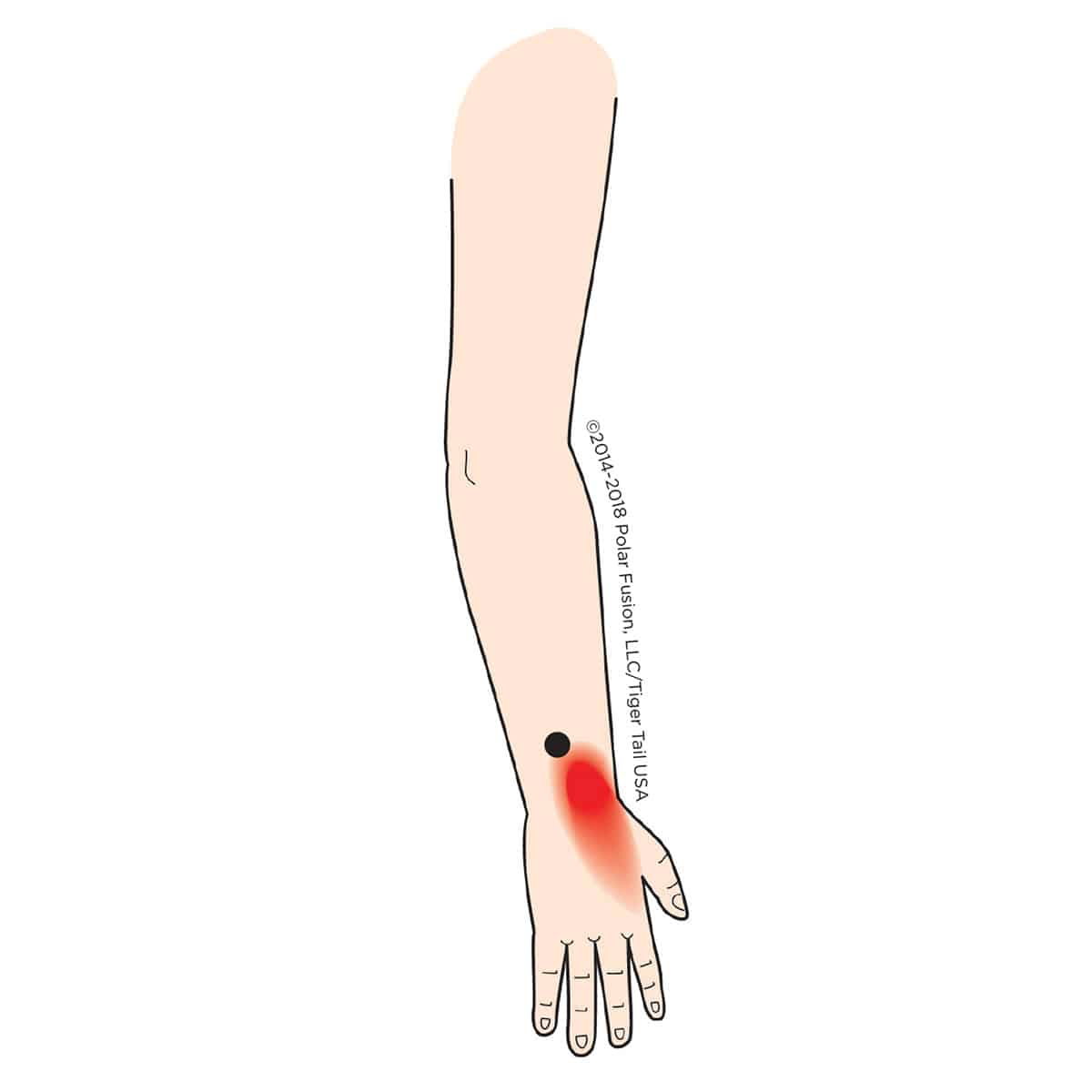
The key role of Extensor Indicis, a thin long muscle in the forearm, is to enable extension of the index finger.
The flexors allow for grasping of things or bringing the fingers together to form or make a fist. The extensors allow the fingers to spread open as to indicate a count of five. Pain in the fingers can originate from muscle knots in the neck, back, shoulder, upper arms, forearm and chest.
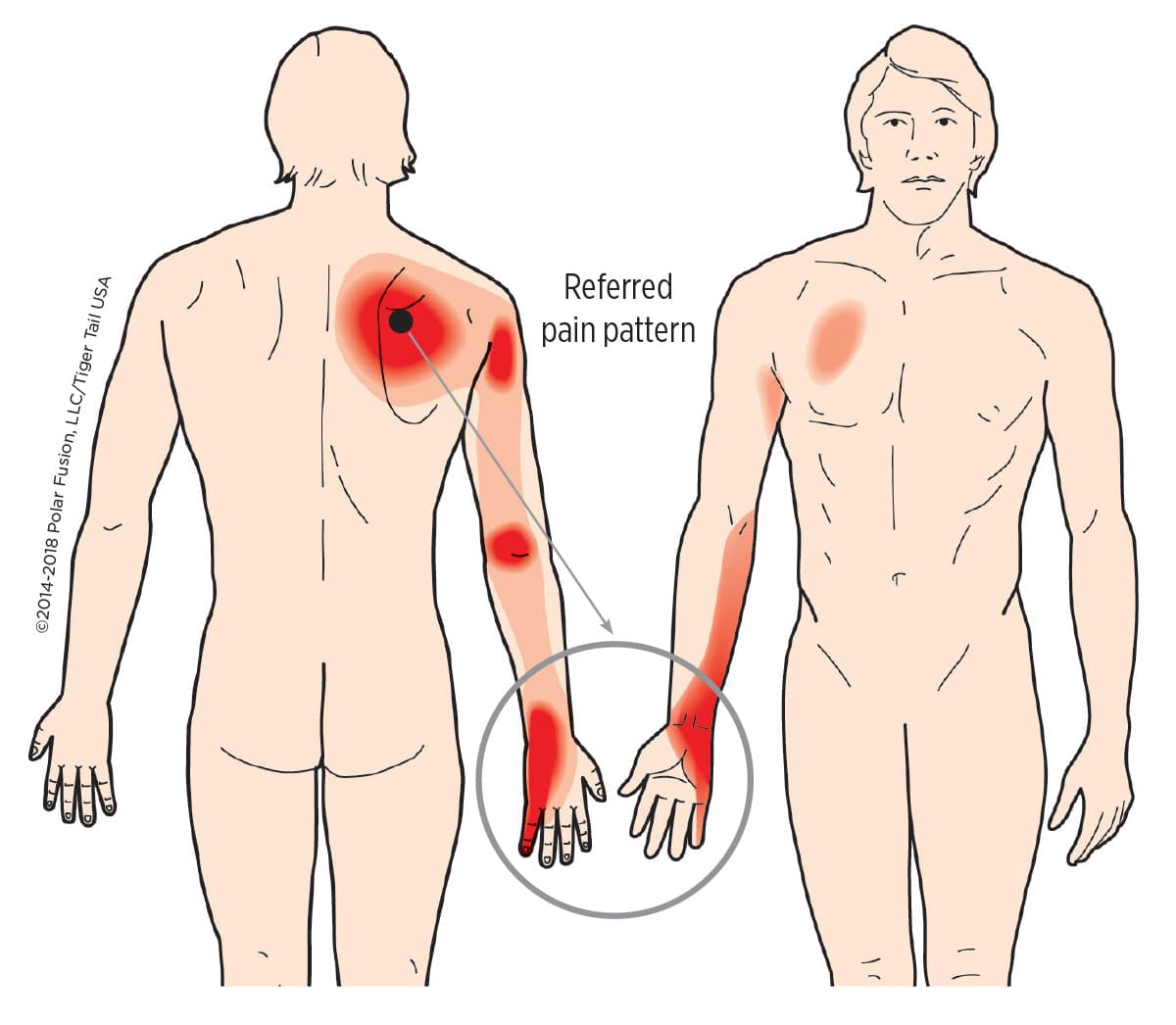
Finger stiffness may be caused by muscle knots in the Serratus Posterior Superior, a thin muscle situated in the upper back.

Dr. Julie Zuleger has over 20 years of experience as a Licensed Massage Therapist, Certified Strength, and Conditioning Specialist (CSCS), Corrective Exercise Specialist, RYT-500 Yoga Instructor, and Human Movement Specialist. Julie promotes self-care using massage tools and stretching-based programs and teaches continuing education courses for yoga teachers, massage therapists, athletic trainers, strength and conditioning, fitness, and wellness professionals. Julie holds a PhD in Education and is the Director of Kinesiology and Education at Tiger Tail USA.
*Not applicable for shipping to Alaska and Hawaii
© 2024 Tiger Tail USA. All Rights Reserved.